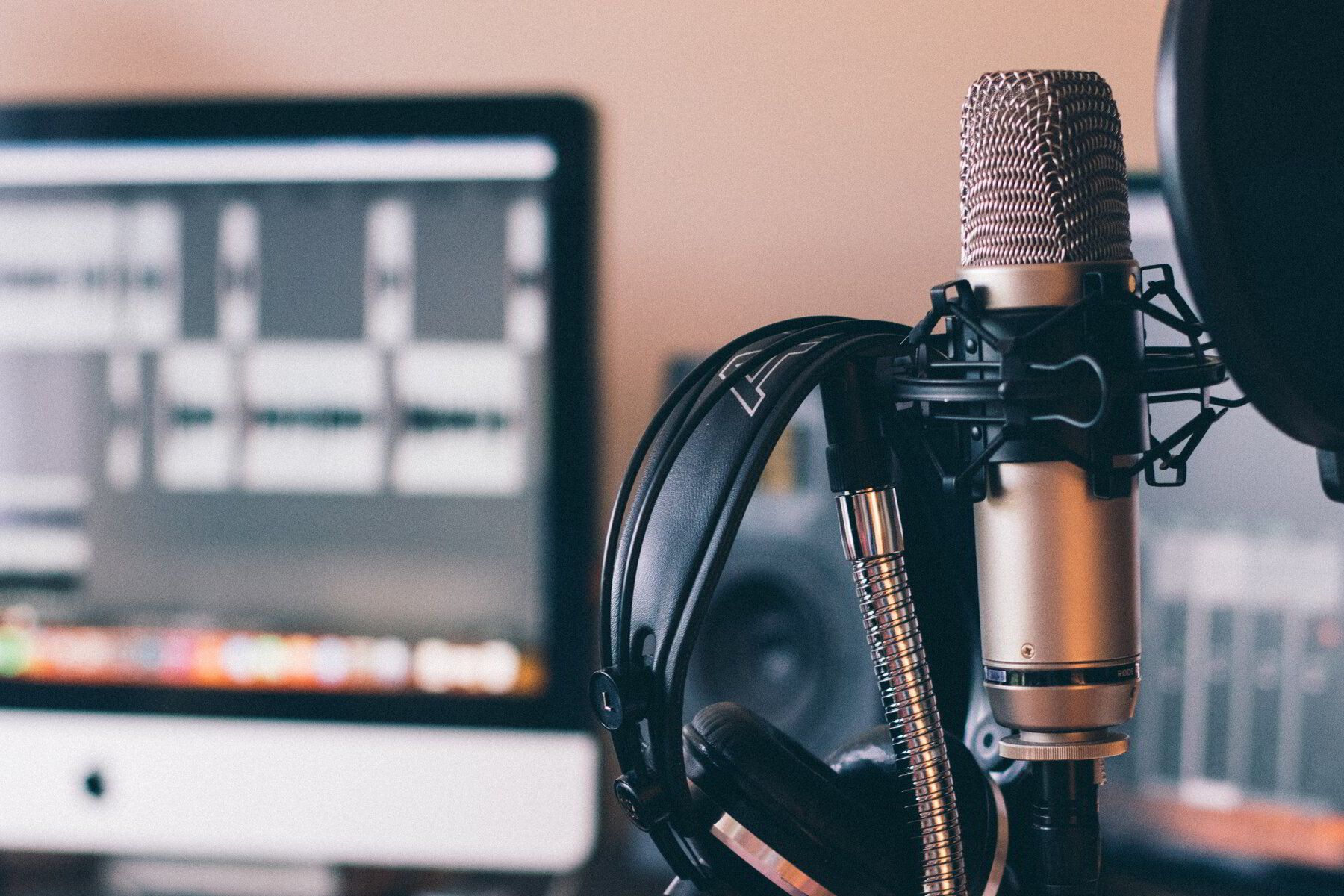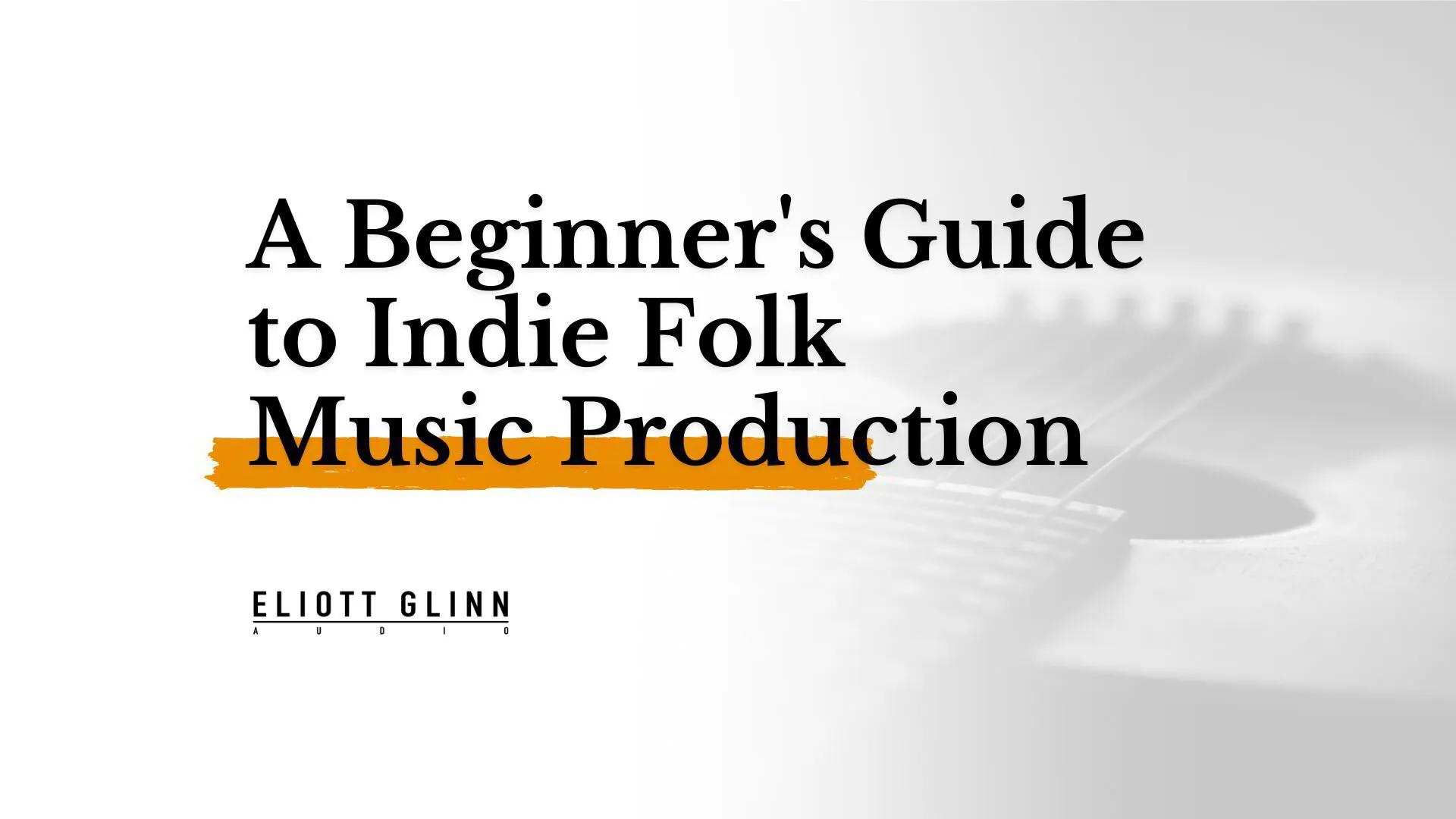Indie folk is a genre of music that combines the raw, acoustic sound of traditional folk music with the independent, DIY spirit of indie rock. It's characterised by its emotional lyricism, use of acoustic instruments such as guitars, banjos, and mandolins, and often features multi-part vocal harmonies.
In this article, we will provide an overview of the steps involved in producing indie folk music, from pre-production to finalising the production. Whether you're a singer-songwriter, producer, or musician looking to produce indie folk music, this guide will provide you with a roadmap to creating the sound you're looking for.

Pre-production
Before you hit the record button, it's important to spend time in pre-production to ensure that your track is well-crafted and that you have all the necessary elements in place. Here are the key steps in the pre-production process:
Writing Lyrics and Melody
When setting out to produce an indie folk song, the first step is to delve into the heart and soul of the lyrics. The lyrics should be genuine, sincere, and full of emotion. The message conveyed should be one that resonates with the listener and conveys a meaningful message.
Choosing topics that are personal to the songwriter can help bring depth and authenticity to the lyrics. Once the lyrics are in place, it is time to begin crafting the melody. An indie folk song is all about the melody, and it should be simple yet memorable. Ideally, the melody should be played on an acoustic instrument like a guitar or piano, as this helps to create a raw and organic sound.
The rhythm of the song should also complement the lyrics and help to bring out the emotion conveyed in the lyrics. Finally, when producing an indie folk song, it is essential to work with musicians who share your vision and can bring the authenticity and emotion of your song to life.
Arranging the Song
Arranging a song is a crucial step in the songwriting process. It allows you to take your initial idea and mold it into a complete and polished composition.
When it comes to arranging a song, it's essential to have a clear idea of what you want to achieve. You need to think about the tone and style of the song and how you want it to make the listener feel.
The overall structure of the song is also an essential consideration. You will need to decide on the number of verses, choruses, and bridges that your song will have. Experimenting with different chord progressions and melodic variations can help you to develop the right structure for your song.
Try to be open-minded and willing to try different approaches until you find a structure that works. Remember that arranging a song is a creative process, and there's no right or wrong way to do it. Take your time, be patient, and keep experimenting until you're happy with the final result.
Choosing Instrumentation
The use of acoustic instruments such as guitars, banjos, mandolins and fiddles is a defining characteristic of the indie folk genre. The gentle strumming of a guitar or the twang of a banjo can evoke a sense of warmth, intimacy and nostalgia that is unique to indie folk music.
When composing an indie folk song, it is important to consider which instruments will work best with the lyrics and melody. Each instrument can contribute to the overall sound and feel of the song, and a balanced arrangement that allows each instrument to shine is key.
The use of harmonies, counter-melodies, and intricate rhythms can create a rich and dynamic sound that will captivate listeners. Ultimately, indie folk music is about storytelling, and expressing the raw emotions that come with the human experience. In using acoustic instruments in a thoughtful and deliberate way, you can create a powerful and moving piece of music that speaks to the heart and soul of your audience.
Preparing the Recording Space
Preparing the recording space is a crucial step in the recording process. Ensuring that the room has good acoustics is essential as it can affect the overall sound quality of the recording. A room with hard surfaces such as tiles or wood can result in reverberations and echoes, which can distort the sound.
It's best to choose a room with soft furnishings or install sound-absorbing materials to minimise these unwanted effects. Additionally, it's important to minimise background noise as much as possible. This can be achieved by closing windows, turning off any appliances or electronics and recording in a quiet space.
Investing in quality microphones and recording equipment is also crucial to achieving great sound quality. Consider purchasing microphones designed for the specific instrument you plan to record to capture the best sound.
It's also important to ensure that your instruments are in tune before recording. A poorly tuned instrument can ruin an otherwise great recording.
Finally, make sure you have everything you need to record the song before starting, including any necessary cables, stands or headphones. By taking the time to properly prepare the recording space, you can ensure that your recording will sound professional and polished.

Recording
Once you have your pre-production work done, it's time to move on to recording. Here are the key steps involved in the recording process:
Setting Up Equipment
Recording audio can be a meticulous process, and ensuring that your equipment is set up properly is crucial to achieving the best possible sound quality. Before you start recording, it's important to take a few minutes to check that your microphones are properly placed, your recording levels are set correctly, and that all cables are connected securely.
Mic placement is critical in capturing the sound you're after, so make sure to position your microphones in the best possible location for your particular recording needs. Setting proper levels is also important and can make a big difference in the final outcome of your recording.
It's a good idea to do a quick sound check, speaking into the microphone at the intended volume to make sure that the levels are not too low or too high. Finally, double-checking that everything is in working order before you start recording will save you time and ensure that you don't miss any important audio.
Make sure that all cables are connected properly and that your audio interface, mixer or recorder is functioning correctly. By taking the time to set up your equipment properly, you'll be well on your way to achieving professional-quality audio recordings.
Recording Techniques
Indie folk music can be a beautiful and intimate genre that often relies on the natural sound of the instruments and vocals. Many indie folk artists choose to record in a live setting to capture this essence and create an authentic sound.
When recording in a live setting, it's important to consider the acoustics of the room. Different rooms have different characteristics that can affect the sound of the recording. It's important to experiment with mic placement and find the sweet spot for each instrument to get the best sound possible.
Additionally, using different mic types and polar patterns can capture different tonal qualities that can add depth and complexity to the recording. In some cases, using a combination of close-miking and room mics can create a sense of space and depth that can really bring a recording to life.
In the end, the goal is to create a recording that captures the essence of the music and the emotion behind it. With some experimentation and attention to detail, indie folk music can be recorded in a way that truly captures its natural beauty.
Layering Tracks
Indie folk music is a genre that is known for its intricate soundscapes and layered instrumentation. Typically, indie folk music features multiple layers of instruments and vocals, creating a rich and textured sonic experience for the listener.
Layering tracks in indie folk music is all about finding the right balance between each element of the mix. Each instrument and vocal should have its own space in the mix, so that none of them get lost or drowned out by the others.
To achieve this balance, it's important to focus on the EQ and levels of each track. Make sure that each instrument is sitting in its own frequency range and isn't clashing with any of the other instruments in the mix. You may need to experiment with panning and stereo imaging to create separation between the different elements of the track.
Adding harmonies is a great way to enhance the overall sound of an indie folk track. Vocal harmonies can add depth and complexity to the melody, while instrumental harmonies can help to fill out the sound and create a more dynamic mix. Percussion is also an important element to consider when layering tracks in indie folk music. Adding a simple drum beat or shaker can give the track a sense of rhythm and help to drive the song forward.
Finally, don't be afraid to experiment with other instruments to add texture and interest to the track. Indie folk music is known for incorporating unconventional instruments like banjos, mandolins, and even orchestral strings. Adding these types of instruments can help to create a unique and memorable sound that sets your track apart from the rest.

Mixing and Mastering
Once you have all your tracks recorded, it's time to move on to mixing and mastering. Mixing involves balancing the levels of each instrument and vocal track, while mastering involves finalising the mix and preparing it for distribution. Here are the key steps in the mixing and mastering process:
Balancing the Mix
The first step in mixing is to balance the levels of each track to create a cohesive, balanced mix. Use EQ and compression to shape the overall sound of the mix, and consider panning each instrument to create a sense of depth and space. Make sure that the vocals are prominent enough in the mix, but not overpowering.
Adding Effects
Indie folk music often features reverb and delay effects to create a sense of space and ambiance. Experiment with different effects to create a unique sound for your mix. Be careful not to overuse effects, however, as it can muddy the sound of the mix.
Mastering the Track
The final step in the production process is mastering. This involves applying final touches to the mix to prepare it for distribution. Mastering can involve EQ, compression, and limiting to bring the overall sound of the mix to the appropriate volume level and ensure that it sounds good across a variety of playback systems.

Finalising the Production
The final step in producing indie folk music is to review the mix, make any necessary adjustments, and finalize the production. Here are the key steps in this process:
Reviewing the Mix
After you have completed mixing and mastering the track, take some time to listen to the mix with fresh ears. Pay attention to the balance of the instruments and vocals, the overall sound of the mix, and any potential issues that need to be addressed.
Making Adjustments
If you notice any issues with the mix, make any necessary adjustments. This could include adjusting levels, adding or removing effects, or tweaking the EQ. Be careful not to overdo it, however, as this can lead to a worse-sounding mix.
Finalising the Production
Once you are happy with the mix, it's time to finalise the production. This involves creating a final mixdown of the track and preparing it for distribution. Consider creating multiple versions of the track, such as radio edits or acoustic versions, to give yourself more options for promotion and exposure.
Remember to keep backups of all your files and to keep your project organized. This will make it easier to make any necessary changes in the future and ensure that your production is ready for distribution. With these steps in mind, you'll be well on your way to producing high-quality indie folk music.
Conclusion
Whilst producing indie folk music isn’t particularly complicated, it does requires careful consideration and attention to detail. Here are the key steps to producing indie folk music that we've covered in this article:
- Pre-production: writing lyrics and melody, arranging the song, choosing instrumentation, and preparing the recording space
- Recording: setting up equipment, recording techniques, and layering tracks
- Mixing and Mastering: balancing the mix, adding effects, and mastering the track
- Finalising the Production: reviewing the mix, making adjustments, and finalising the production
Remember to take your time and experiment with different techniques and approaches to find the sound that works best for you. Don't be afraid to try new things and take risks in your production.
In conclusion, producing indie folk music requires a combination of creativity, technical skill, and attention to detail. By following the steps outlined in this article, you'll be well on your way to producing high-quality indie folk music that you can be proud of. Good luck and happy producing!
The Indie Artist's Home Recording Handbook
A free guide to help indie artists capture the highest quality recording possible from their home studio setup
Recording music is not easy, especially in a home studio environment. There are so many things that you need to get right to ensure you get the best quality recording.
Sure, you can plug a mic in and hit record. But how do you know if you are doing it right to capture the best performance?
I've been there – struggling with a bunch of tiny issues that eventually snowball into big ones. It's an uphill struggle trying to do everything using amateur equipment rather than a full-on professional set up. But the good news is, it can be done!
I've put together this guide to walk you through every stage and setting step-by-step to make sure you are getting the best quality recording you can in your home studio.
We will literally never ever ever send spam

